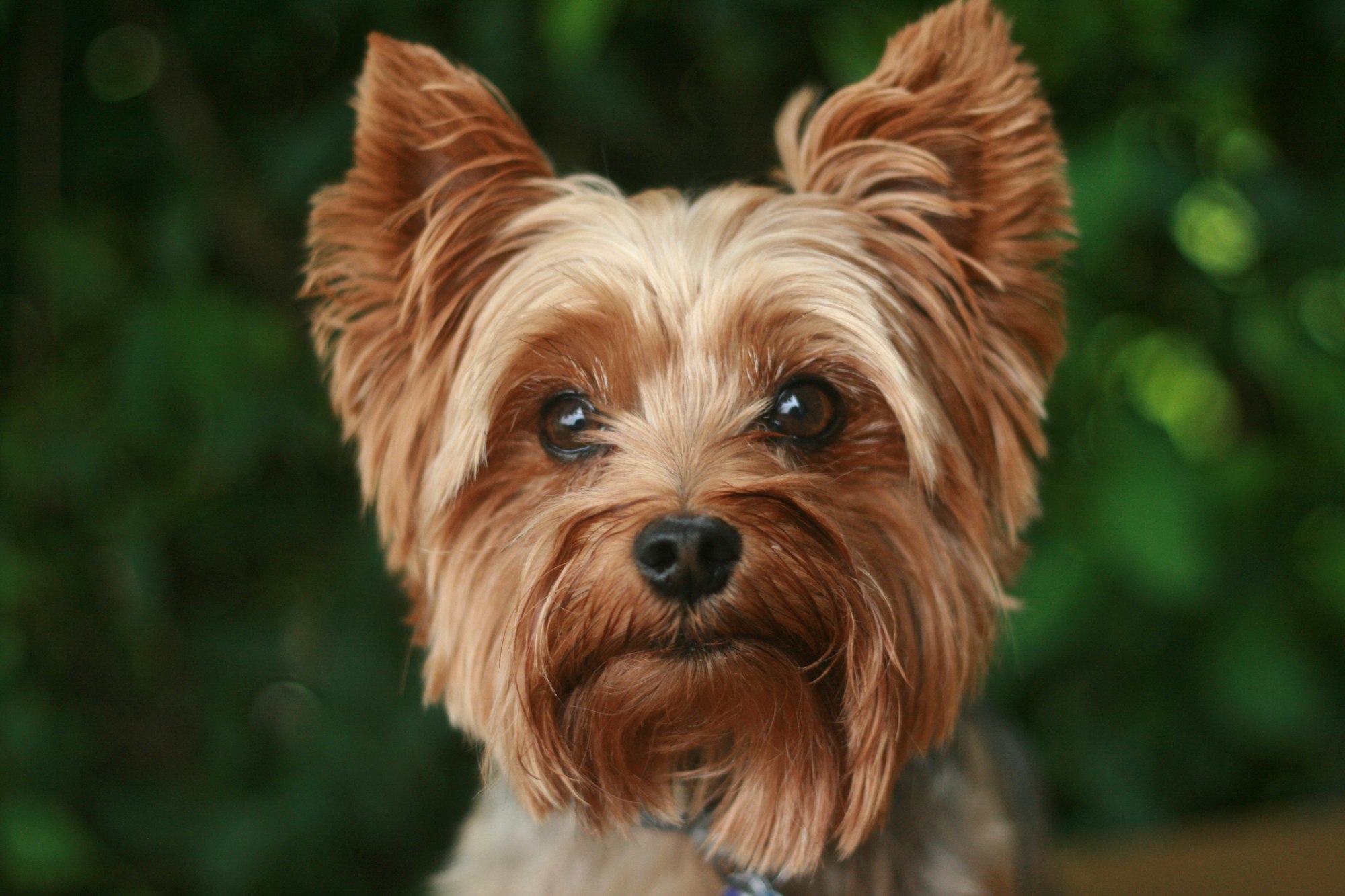Are Maltese only white? This question has puzzled many dog lovers, as the Maltese breed is commonly associated with their striking white coats. However, you might be surprised to learn that Maltese dogs can come in a variety of colors. While white is the most prevalent and well-known color, Maltese can also have shades of cream, ivory, or even light orange. These alternate coat colors are less common and often considered a variation within the breed.

It's important to note that regardless of their color, all Maltese dogs share the same delightful temperament and charming personality. Whether you prefer the classic white look or are open to embracing a Maltese with a unique coat color, one thing is for sure - you'll be captivated by their affectionate nature and fun-loving spirit. So, if you're considering adding a Maltese to your family, remember that their color is just one aspect of their irresistibly lovable character.
The Common Misconception of Maltese Dogs Being Only White
When people think of Maltese dogs, the image that often comes to mind is that of a small, fluffy white dog with a playful and elegant demeanor. This perception has led to the common misconception that Maltese dogs are only white in color. While it's true that white is the most common color seen in Maltese dogs, it's not the only color they can have. In fact, Maltese dogs can come in various shades and hues, adding diversity to the breed.

The Natural Coat Colors of Maltese Dogs
Maltese dogs have a genetic predisposition for their coat color. While white is the most prevalent color, other natural coat colors include cream, ivory, and light orange. These colors can vary in intensity and may be influenced by factors such as genetics, diet, and overall health. It's important to understand that the coat color of a Maltese dog is not an indication of their purity or breed standard. Instead, it is simply a variation within the breed that adds to the uniqueness and individuality of each dog.
Understanding the Genetics of Maltese Coat Colors
The coat color of a Maltese dog is determined by genetics. The genes responsible for coat color are inherited from the dog's parents, and the combination of these genes determines the color that will be expressed in the dog's coat. The specific genes involved in determining coat color can be complex and are still not fully understood. However, it is known that the gene responsible for white coat color in Maltese dogs is recessive, meaning that both parents must carry the gene in order for a puppy to be born with a white coat.
Factors That Can Affect the Coat Color of a Maltese Dog
While genetics play a significant role in determining the coat color of a Maltese dog, there are other factors that can also influence the color of their coat. Diet, for example, can impact the overall appearance and health of a dog's coat. A diet rich in essential nutrients, such as omega-3 fatty acids and biotin, can promote a healthy coat and vibrant color. Additionally, environmental factors, such as exposure to sunlight or certain chemicals, can also affect the color of a dog's coat over time.
Recognized Coat Colors in Maltese Breed Standards
In breed standards, the Maltese dog is recognized primarily for its white coat color. However, breed standards also acknowledge the possibility of other coat colors, such as cream or light orange, as long as they are within specific guidelines. These guidelines ensure that the coat color remains true to the essence of the breed while allowing for some variation and individuality. It's important to note that while other coat colors are recognized, they may be less common in the show ring or in breeding programs.
The Prevalence of White Maltese Dogs and Why They Are Most Commonly Seen
White Maltese dogs are the most commonly seen and recognized color within the breed. This prevalence can be attributed to several factors. Firstly, the recessive gene for white coat color is more frequently present in the breeding population, making it more likely for puppies to be born with a white coat. Additionally, the preference for white Maltese dogs among breeders and dog enthusiasts has contributed to their popularity. The striking beauty and elegance of a white Maltese, combined with their charming personality, make them highly sought after by those looking for a companion or show dog.
Other Coat Colors Found in Maltese Dogs
While white is the dominant color in the Maltese breed, there are other coat colors that can be found in these dogs. Cream is a common variation, with a lighter shade than pure white. Ivory is another color that can be seen in Maltese dogs, characterized by a slightly off-white hue. Light orange is a less common but still recognized color within the breed. These alternate coat colors add diversity to the Maltese population and provide an opportunity for individuals to own a Maltese with a unique and eye-catching appearance.
Tips for Finding and Selecting a Maltese Dog With a Specific Coat Color
If you have a preference for a specific coat color in a Maltese dog, there are a few tips that can help you find and select the right puppy. Firstly, do thorough research and find reputable breeders who specialize in the coat color you desire. Ask for references and visit the breeder's facilities to ensure they are ethical and prioritize the health and well-being of their dogs. Additionally, be patient and prepared for a potentially longer wait time, as puppies with specific coat colors may be less common. Finally, remember that while coat color is important, it should not be the sole determinant of your decision. Consider other factors such as temperament, health, and compatibility with your lifestyle to ensure a successful and happy match.

Cultural Perceptions of Maltese Coat Color
In different cultures, the Maltese dog holds various significances, influencing perceptions and preferences in coat colors. Cultural nuances play a role in how these adorable pets are viewed and cherished around the world.
Maltese Dogs in Mediterranean Culture
Originating from the Mediterranean, Maltese dogs have a deep-rooted connection with the local culture. In this region, the white coat of the Maltese is often associated with purity and prosperity. These dogs are considered symbols of good luck, and their presence in homes is believed to bring blessings and positive energy.
Asian Perspectives on Maltese Coat Colors
In many Asian cultures, white is traditionally associated with purity and cleanliness. This aligns with the pristine, white coats of Maltese dogs, making them highly regarded as symbols of purity and good fortune. In countries like China and Japan, Maltese dogs are often featured in art and literature as symbols of elegance and luck.
Western Influences on Maltese Coat Color Trends
In Western cultures, particularly in Europe and North America, the perception of Maltese coat colors has evolved with changing trends. While the traditional all-white Maltese is still highly cherished, there is a growing acceptance and appreciation for variations in coat colors. Some individuals prefer Maltese dogs with unique markings or slight color deviations, reflecting a shift in cultural preferences.
Maltese Dogs in Royal and Aristocratic Circles
Throughout history, Maltese dogs have been favored by royalty and aristocracy. The connection between these elegant dogs and nobility has influenced cultural perceptions. In some cultures, owning a Maltese with a specific coat color may be seen as a status symbol, reflecting a tradition of associating certain breeds and colors with elevated social standing.
Celebrities and Maltese Dogs
Celebrities worldwide have played a significant role in popularizing Maltese dogs and influencing trends in coat colors. The companionship of these charming dogs with well-known personalities has added to the breed's allure.
Famous Maltese Owners
Numerous celebrities have chosen Maltese dogs as their beloved companions. From actors and musicians to fashion icons, the list of Maltese enthusiasts is extensive. Celebrities like Halle Berry, Eva Longoria, and Heather Locklear have been spotted with their adorable Maltese pets, contributing to the breed's popularity.
Impact on Maltese Coat Color Trends
Celebrities often set trends, and this holds true for Maltese coat colors. When a celebrity showcases a Maltese with a unique coat color or distinctive markings, it can trigger a surge in demand for similar-looking dogs. The influence of celebrities on pet preferences extends to the realm of coat colors, shaping the landscape of Maltese breeding practices.
Promoting Responsible Ownership
While celebrities may bring attention to certain coat colors, responsible ownership remains paramount. Potential Maltese owners should prioritize the health and well-being of their pets over fashionable trends. Understanding the breed's characteristics and needs is crucial for providing a loving and nurturing environment for these delightful companions.
In conclusion, the cultural perceptions of Maltese coat colors are diverse, shaped by traditions, trends, and the influence of celebrities. Whether cherished for their traditional all-white appearance or admired for unique variations, Maltese dogs continue to capture hearts around the globe.

Conclusion and Summary of Maltese Dog Coat Colors
In conclusion, while Maltese dogs are commonly associated with their white coats, they can come in a variety of colors including cream, ivory, and light orange. These alternate coat colors are considered a variation within the breed and add diversity to the Maltese population. The coat color of a Maltese dog is determined by genetics, although other factors such as diet and environment can also influence their color.
White Maltese dogs are the most commonly seen due to the prevalence of the recessive gene for white coat color and the preference for this color among breeders and happy dog enthusiasts. If you have a specific coat color preference, research reputable breeders and be patient in your search. Remember that while coat color is important, it is just one aspect of a Maltese dog's lovable character, which includes their affectionate nature and fun-loving spirit. Whether you choose a classic white Maltese or embrace a unique coat color, you'll surely be captivated by the charm and personality of these delightful dogs.
FAQs about Maltese Coat Color
Q1: Can Maltese dogs have coat colors other than white?
Maltese dogs are primarily known for their white coats, but variations, such as cream or light tan markings, can occur. However, solid non-white colors are not standard for the breed.
Q2: Do Maltese puppies' coat colors change as they grow older?
Yes, the coat color of Maltese puppies may evolve as they mature. Some may start with a slightly different shade of white or develop markings over time.
Q3: Are there specific genes that determine Maltese coat color?
Yes, genetics play a crucial role in determining Maltese coat color. Genes inherited from the parents influence the shade and markings of the dog's coat.
Q4: Can environmental factors affect the color of a Maltese dog's coat?
While genetics primarily determine coat color, environmental factors like sunlight exposure and nutrition can influence coat health and appearance.
Q5: Are there particular grooming considerations for maintaining the whiteness of a Maltese dog's coat?
Regular grooming is essential to maintain the whiteness of a Maltese dog's coat. Using appropriate shampoos and conditioners and addressing any tear staining can help keep the coat pristine.

Q6: Do Maltese dogs with different coat colors have distinct temperaments?
Temperament is not directly linked to coat color in Maltese dogs. Their friendly and affectionate nature remains consistent regardless of coat variations.
Q7: Can Maltese dogs with non-white markings participate in dog shows?
In official dog shows, Maltese dogs are typically judged based on breed standards, which emphasize a predominantly white coat. Dogs with non-standard colors or markings may not conform to show requirements.
Q8: Do coat color preferences impact the pricing of Maltese puppies?
In some cases, Maltese puppies with unique or rare coat colors may be priced differently. However, responsible breeders prioritize the overall health and well-being of the dog rather than focusing solely on coat color.
Q9: Are there specific health concerns related to certain Maltese coat colors?
While coat color itself doesn't directly impact health, Maltese dogs with more extensive areas of non-pigmented skin may be prone to sunburn. Protective measures like sunscreen may be recommended.
Q10: Can I predict the adult coat color of a Maltese puppy?
Predicting the exact adult coat color of a Maltese puppy can be challenging. Genetic factors and environmental influences contribute to the final coat color, making it somewhat unpredictable.




